Thanks Christian and Francisco for the feedback. I was thinking that they may actually live within a close range of maybe 10 m perimeter. I have seen this before with Brunneria Borealis where about 20 adult (i am sure there are more) were spotted in a grassy area of 30 ft x 15 ft. BUt the ootheca we collected spread over a large area so don't think the maternal instinct is involved in returning to the same spot they hatched but rather locating a better place to lay with better chance for the ootheca to hatch.
You are using an out of date browser. It may not display this or other websites correctly.
You should upgrade or use an alternative browser.
You should upgrade or use an alternative browser.
Pseudovates peruviana
- Thread starter mantisdeperu
- Start date

Help Support Mantidforum:
This site may earn a commission from merchant affiliate
links, including eBay, Amazon, and others.
mantisdeperu
Well-known member
Hello. I attach the contribution of my friend Julio Rivera, Neotropical mantids specialist, about the differences between Pseudovates and Phyllovates.
Thanks Julio.
Hello there. Yes, Phyllovates and Pseudovates are very
similar to each other. However, there are several
obvious differences that are easier to pick when you
compare males and females of both genera. Phyllovates
species are usually larger and stouter than those of
Pseudovates. Additionally, Phyllovates doesn’t show
lobes in the middle and hind legs, whereas Pseudovates
has lobed legs but these lobes less numerous and
smaller than those showed by the genus Vates. These
lobes are usually more developed in the females and
that’s is why males of Pseudovates might be confused
with Phyllovates.
I hope this information will help to clarify this
issue
Julio Rivera.
Thanks Julio.
Hello there. Yes, Phyllovates and Pseudovates are very
similar to each other. However, there are several
obvious differences that are easier to pick when you
compare males and females of both genera. Phyllovates
species are usually larger and stouter than those of
Pseudovates. Additionally, Phyllovates doesn’t show
lobes in the middle and hind legs, whereas Pseudovates
has lobed legs but these lobes less numerous and
smaller than those showed by the genus Vates. These
lobes are usually more developed in the females and
that’s is why males of Pseudovates might be confused
with Phyllovates.
I hope this information will help to clarify this
issue
Julio Rivera.
Thanks for the info Christian. I am glad that few nymphs from this species hatched out for me today!! My first Pseudovates, from South American instead of the native US species. Huge nymph!
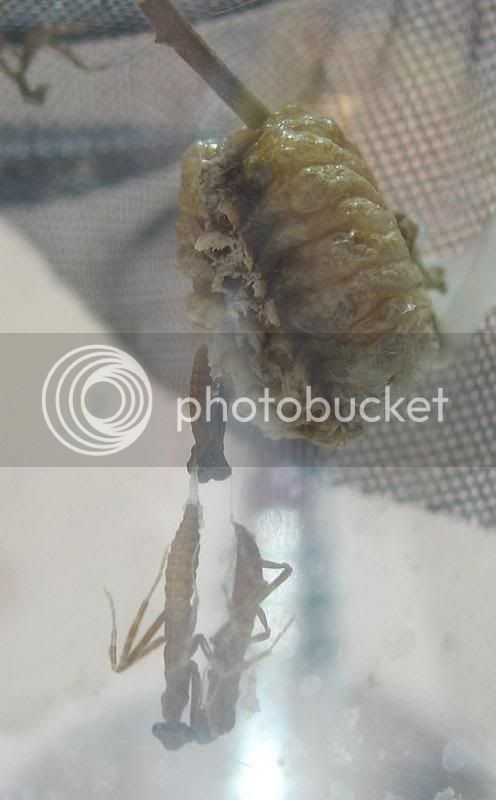
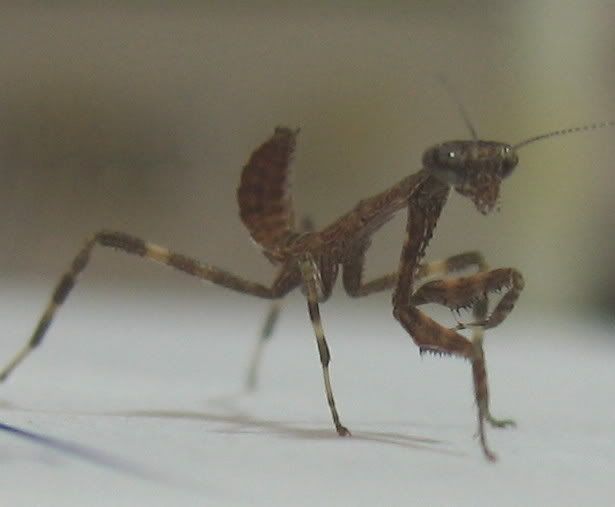
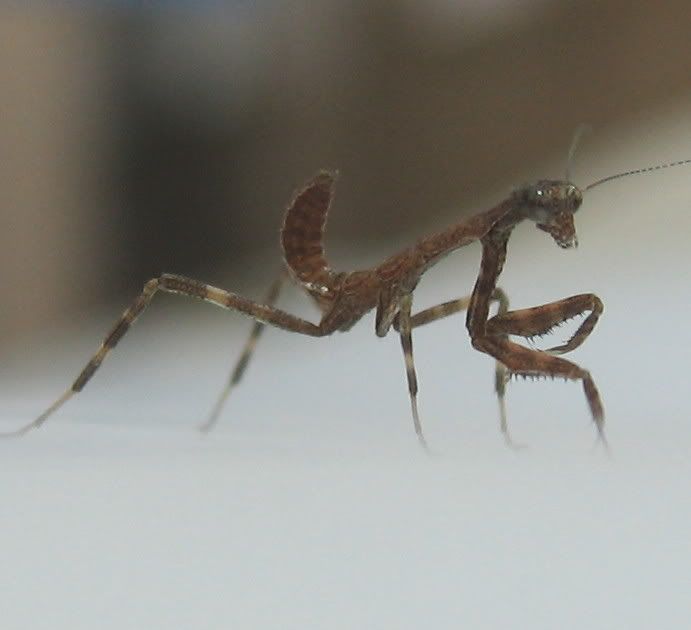
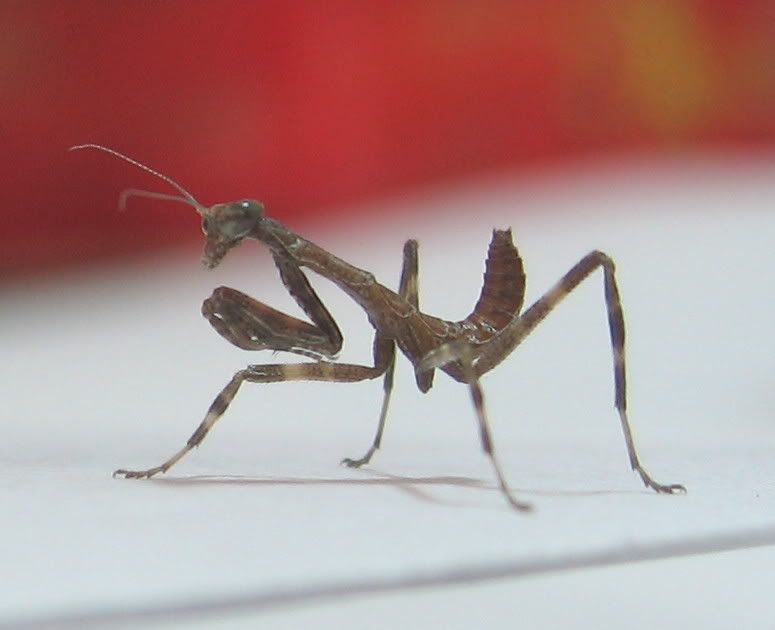




robo mantis
Well-known member
Finally after 2 weeks, some L1 Pseudovates Peruviana molted into L2! This species prefer cooler temperature and take 7 months to become an adult according to Christian (Peru). I am doing a "test" by keeping some of them at the max. limit (~26C) to see if that speeds up (or kill them!) the growth. Just an update for anyone interested to know this species.
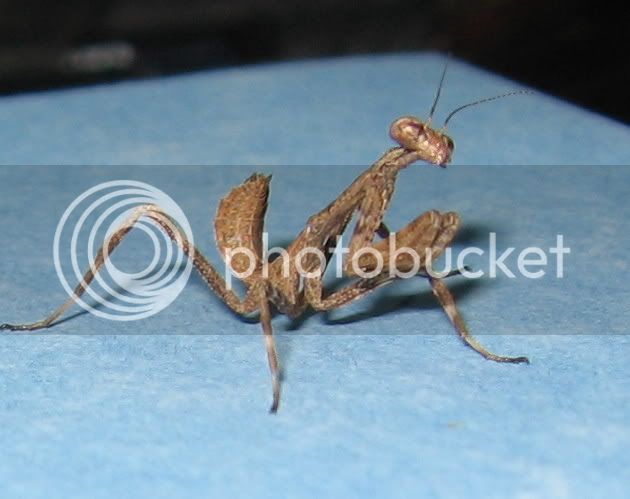
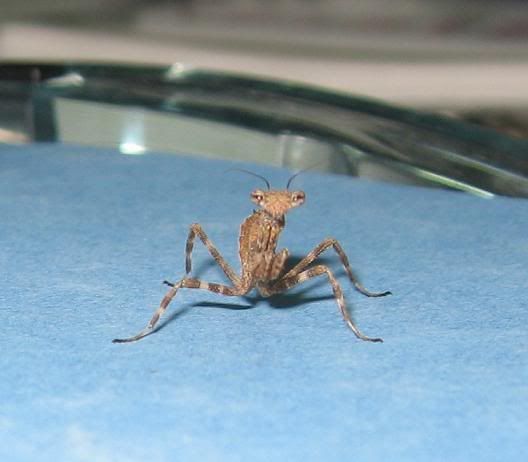
Tempting to give a common name like "Peruvian stick mantis" for this species but will wait till this species name is verified.


Tempting to give a common name like "Peruvian stick mantis" for this species but will wait till this species name is verified.
wuwu
Well-known member
this looks like an interesting species, good luck with them!

$14.00
$89.85
Praying Mantis Egg Case with Hatching Habitat Cup - 2 Praying Mantids Egg Cases
NaturesGoodGuys

$16.99 ($0.53 / Ounce)
Fresh Fruit Fly Culture (Drosophila Hydei) - Praying Mantis Mantid Frog Lizard Food - 32oz Cup
Surmen Legacy

$13.99 ($223.84 / lb)
Surmen Legacy Freshly Started Wingless Drosophila Melanogaster Fruit Fly Culture
Surmen Legacy

$12.54
Butterfly Breeding Net, Folding Butterfly Habitat Cage White Butterfly Mesh Cage for Kid Garden Science Education Tool 40x40x60cm
enshishiqiannanwangluoyouxiangongsi

$29.99 ($0.15 / Ounce)
TC INSECTS . 200+ XS Red Runner Live Roaches Food for Dart Frogs Praying Mantis Spiders Small Lizard Tropical Fish (1/16-1/4 in)
TC INSECTS

$19.99
Nature Bound Bug Catcher Critter Barn Habitat for Indoor/Outdoor Insect Collecting with Light Kit, White
THiN AiR Brands LLC

$39.95 ($1.25 / Ounce)
Creation Cultivated 32oz Fruit Fly Culture - Live Feeder Insects for Praying Mantis, Jumping Spiders, Geckos, Lizards, Dart Frogs (Drosophila Hydei Flightless)
Creation Cultivated

$18.99 ($2.12 / Ounce)
Josh's Frogs Producing Wingless Drosophila Melanogaster Fruit Fly Culture
Josh's Frogs

$38.70
Carolina Mantis Egg Hatching Kit - 2 Eggs Fresh for The Season
HeZeXinHaoYunWangLuoXiaoShouGongSi

$3.19 ($42.53 / lb)
$6.09 ($81.20 / lb)
Fluker's Gourmet Canned Food for Reptiles, Fish, Birds and Small Animals, Black, Mealworms 1.23 Ounce (Pack of 1)
Amazon.com

$16.99 ($16.99 / Count)
Josh's Frogs Freshly Started Flightless Drosophila Hydei Fruit Fly Culture
Josh's Frogs
mantisdeperu
Well-known member
Hi Guys. Here more Pseudovates peruviana ooths.
My daughter Maria-Fernanda is not afraid to any insect.




Regards
My daughter Maria-Fernanda is not afraid to any insect.




Regards
Ian
Well-known member
Lovely photos! Do you have any more ootheca available? Also, where did you first obtain this species from?
francisco
Well-known member
Hello Ian,
Chris is a good friend of mine, and he told me he colected them from the wild.
He lives in Lima so he traveled to the jungle to find them.
Regards
FT
Chris is a good friend of mine, and he told me he colected them from the wild.
He lives in Lima so he traveled to the jungle to find them.
Regards
FT
Ian
Well-known member
Wow, freshly wild collected, can't get much better than that 
Cheers FT.
Cheers FT.
mantisdeperu
Well-known member
Hi Guys. Hi Francisco and Ian. I have collected this specie in an arid zone of Peru, in general this genus is found in dry zones, unlike other Vatinae's genus like Phyllovates and Vates, which are distributed in tropical zones.
With regard to the oothecae, all of them are laying under upbringing, I guarantee the variability and health of the individuals.
At the moment I have some oothecae to sell, if someone is interested only contact me.
Regards
With regard to the oothecae, all of them are laying under upbringing, I guarantee the variability and health of the individuals.
At the moment I have some oothecae to sell, if someone is interested only contact me.
Regards
mantisdeperu
Well-known member
Here more photos.


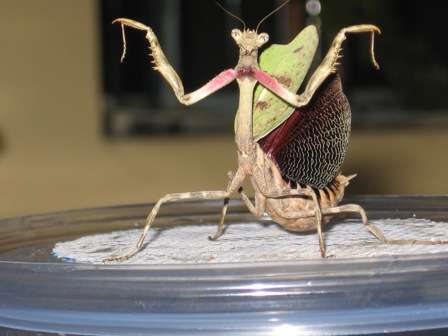



Nice pics Christian! Do you have a pic for adult male of this species?
Looks like she has a horn on the second pic but believed it is just part of the wing instead?
Looks like she has a horn on the second pic but believed it is just part of the wing instead?
Rob Byatt
Well-known member
There was a topic on this species where I had posted photos, but I can't find it to reply to.
Anyway, amidst all the excitement I forgot to say that this species has given me a new generation !!!! I'm really happy about this - it really is a great little mantis.
My first ootheca hatched around the 18th May, so they'll all be 2nd instar soon
Rob.
Anyway, amidst all the excitement I forgot to say that this species has given me a new generation !!!! I'm really happy about this - it really is a great little mantis.
My first ootheca hatched around the 18th May, so they'll all be 2nd instar soon
Rob.
Is this species being cultured by anyone in the US? I'd love to get some of these niffty little critters!!
Asa
Well-known member
Sorry Hypopnera, I sold all mine.
I believed Perry still have some, do you Perry?
ASA,
Can you tell me about them? Did you have any problems with rearing them? Why did you sell them off? I know Yen stopped after he successfully bred them. It was time for a new challenge! I'd be happy with a culture of these guys. They might hold me until I finally get a hold of the Arizona Unicor mantid. Of course, that is if I manage to find the Peruvians.
Can you tell me about them? Did you have any problems with rearing them? Why did you sell them off? I know Yen stopped after he successfully bred them. It was time for a new challenge! I'd be happy with a culture of these guys. They might hold me until I finally get a hold of the Arizona Unicor mantid. Of course, that is if I manage to find the Peruvians.
i raised Peruvian stick to adult from ootheca but did not breed them, i sent all the subadults and adults to Perry.
Rob Byatt
Well-known member
They are very easy to raise and don't seem to be particular fussy about temperature or humidity, though keeping them above 85F is not a good idea.ASA,Can you tell me about them? Did you have any problems with rearing them? Why did you sell them off? I know Yen stopped after he successfully bred them. It was time for a new challenge! I'd be happy with a culture of these guys. They might hold me until I finally get a hold of the Arizona Unicor mantid. Of course, that is if I manage to find the Peruvians.
They are one of the easiest mantids to pair up - the males are very eager and the females not aggressive. The males do not live long after maturing though; approx. 3 months.
I'm not 100% certain, but I think that the ootheca prefer lower incubation temperatures than other species, no more 80F. I have experienced low hatches and I presume it is due to the temperature getting to high where they are.
The females seem relutant to lay, but are long lived.
hope that helps !
Rob.































